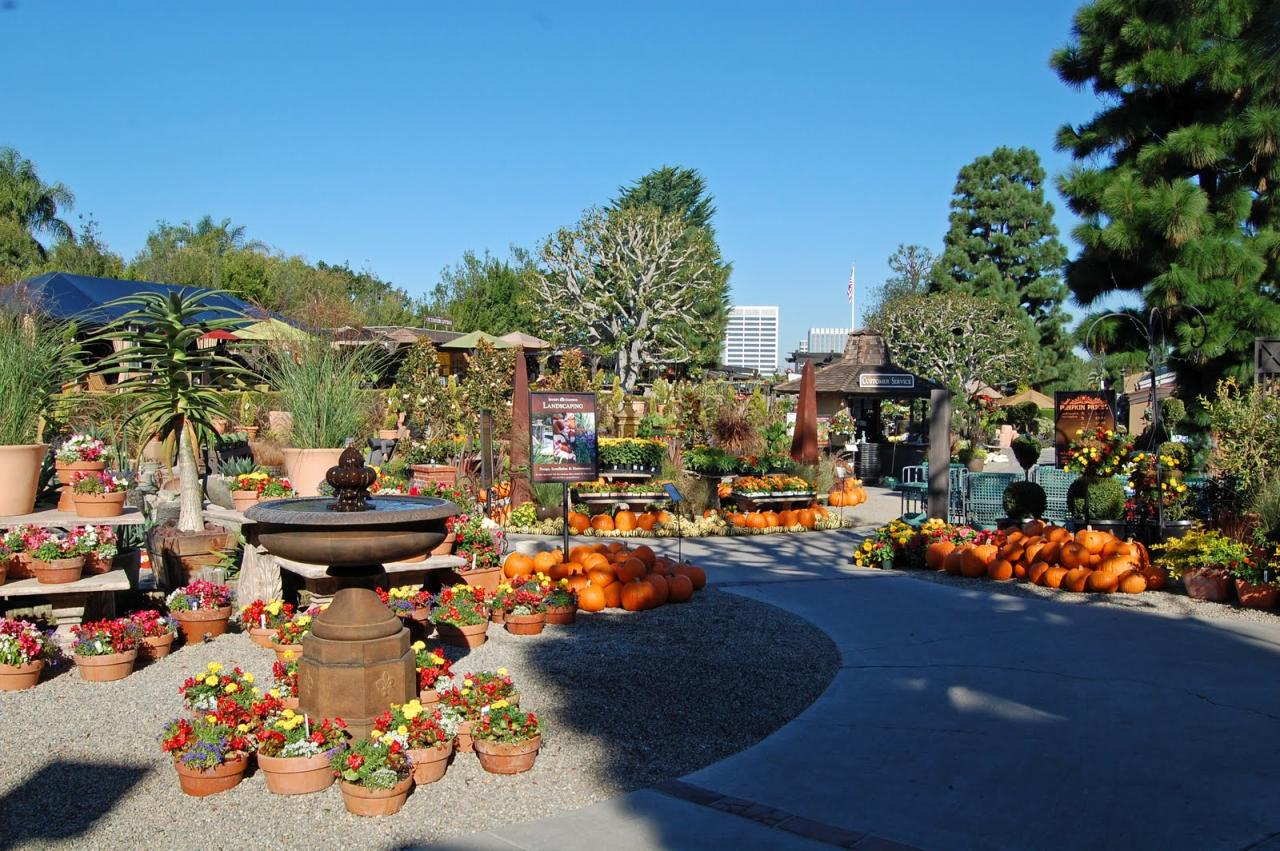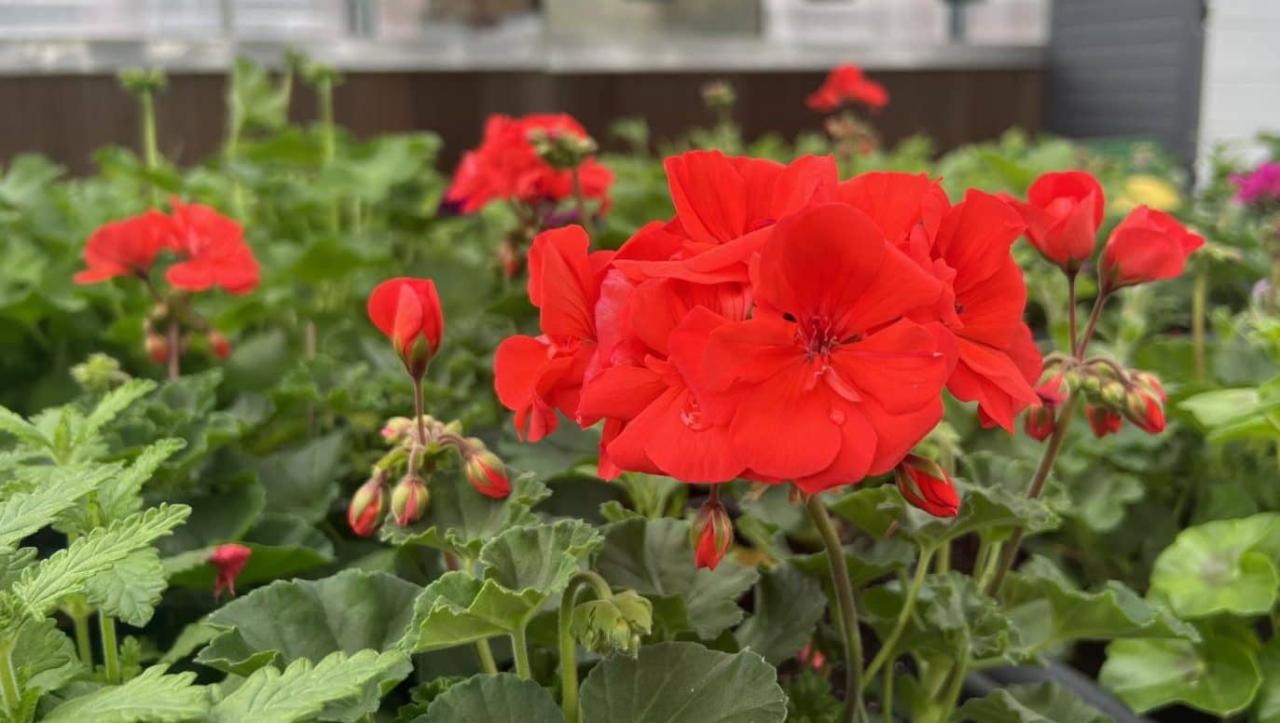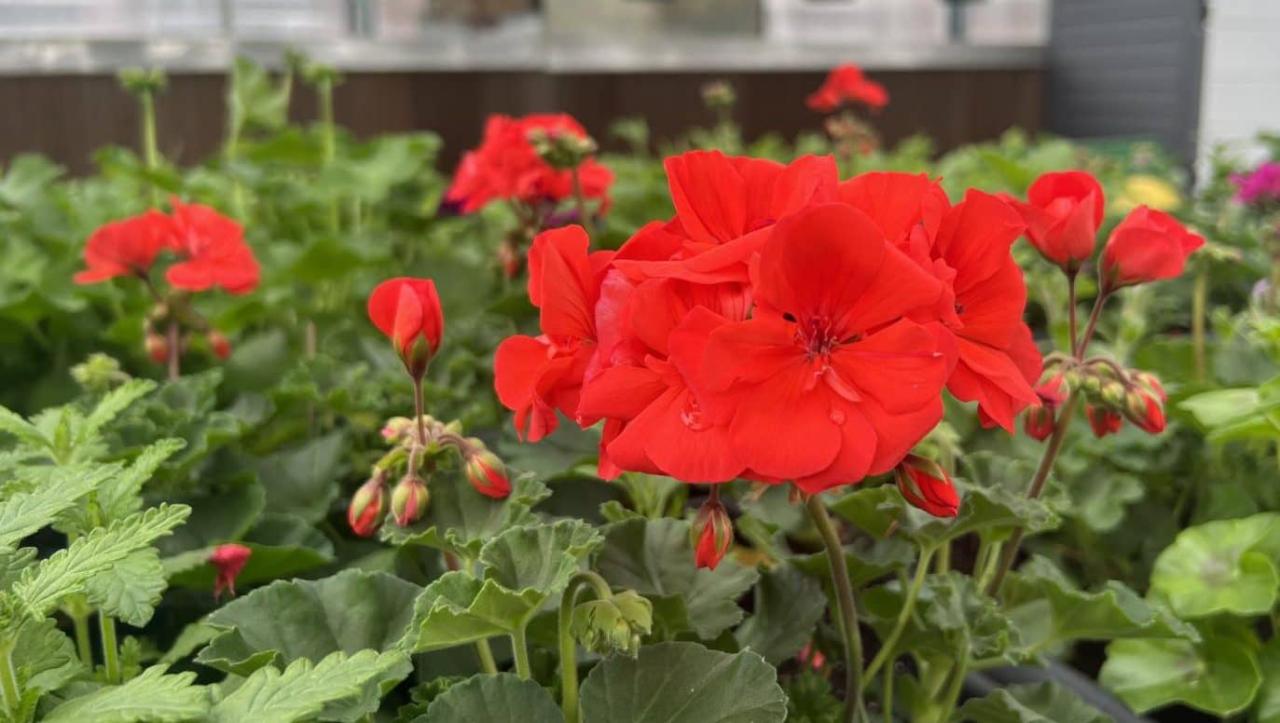Rodgers Plant Care Secrets for a Thriving Garden: Unlocking the secrets to cultivating these magnificent plants, known for their striking foliage and unique beauty, can be a rewarding journey for any gardener. Rodgers plants, with their distinctive characteristics and adaptability, offer a unique opportunity to create a flourishing garden filled with vibrant color and texture.
This guide delves into the essential care practices, from planting and fertilization to managing pests and diseases, providing comprehensive insights to help you cultivate a thriving garden filled with the splendor of Rodgers plants.
Whether you are a seasoned gardener or just starting out, this guide will equip you with the knowledge and practical advice needed to successfully cultivate Rodgers plants. From understanding their unique characteristics and preferred conditions to mastering essential care practices, we will explore each aspect of nurturing these remarkable plants.
Understanding Rodgers Plants
Rodgers plants, scientifically known asRodgersia*, are a genus of herbaceous perennials renowned for their striking foliage and impressive size. They are a captivating addition to any garden, bringing a touch of grandeur and elegance.
Characteristics of Rodgers Plants
Rodgers plants are distinguished by their large, palmately compound leaves, resembling those of a maple tree. These leaves can reach impressive dimensions, sometimes exceeding two feet in diameter. The leaves are typically deep green and have a leathery texture, providing a unique visual appeal.
The foliage often features intricate venation patterns, adding further to their captivating aesthetic.
Growth Habits of Rodgers Plants
Rodgers plants are vigorous growers, forming large clumps that can spread over time. Their growth habit is characterized by a basal rosette of leaves, with tall flower stalks emerging from the center of the rosette. The flowers are typically white or pink and appear in clusters at the top of the stalks.
Native Habitats and Preferred Conditions
Rodgers plants are native to the mountainous regions of eastern Asia, particularly in China, Japan, and Korea. They thrive in cool, moist environments, often found growing in woodland areas, along streams, and in shady spots. They prefer well-drained soil that is rich in organic matter and slightly acidic.
Light Requirements
Rodgers plants prefer dappled shade to partial shade. While they can tolerate some full sun, particularly in cooler climates, they perform best in conditions that mimic their native habitats. Excessive sun exposure can lead to scorching and wilting of the leaves.
Water Requirements
Rodgers plants require consistent moisture and are best suited to locations with regular rainfall or irrigation. They are intolerant of drought conditions and may suffer from wilting and leaf drop if their water needs are not met.
Soil Requirements
Rodgers plants thrive in moist, well-drained soil that is rich in organic matter. They prefer slightly acidic soil, with a pH range of 5.5 to 6.5. They can tolerate heavier soils, but drainage is crucial to prevent root rot.
Temperature Preferences
Rodgers plants are generally hardy and can tolerate a wide range of temperatures. However, they prefer cool climates and may struggle in excessively hot and humid conditions. They are best suited to USDA hardiness zones 4 to 8.
Essential Care Practices
Providing the right care is crucial for the health and vitality of your Rodgers plants. Understanding their specific needs and implementing proper techniques can ensure their optimal growth and long-term success.
Planting Rodgers Plants
Planting Rodgers plants involves a few key steps to ensure their successful establishment.
- Choose the right time:The best time to plant Rodgers plants is during the spring or fall when the soil is warm and the weather is mild. This allows the plants to establish their roots before the heat of summer or the cold of winter.
- Prepare the planting site:Select a location that receives the appropriate amount of sunlight for the specific variety of Rodgers plant you are planting. Ensure the soil is well-drained and amend it with compost or other organic matter to improve its fertility and structure.
- Dig a hole:Dig a hole that is twice as wide and as deep as the root ball of the plant. Gently loosen the roots of the plant to encourage them to spread out and grow.
- Position the plant:Place the plant in the hole so that the top of the root ball is level with the ground. Backfill the hole with soil, gently pressing it down around the roots to ensure good contact.
- Water thoroughly:Water the newly planted Rodgers plant deeply to settle the soil and help it establish its roots.
- Mulch:Apply a layer of mulch around the base of the plant to help retain moisture, suppress weeds, and regulate soil temperature.
Soil Requirements
The soil composition plays a significant role in the overall health and growth of Rodgers plants.
- Well-drained soil:Rodgers plants thrive in well-drained soil that allows excess water to flow through. Avoid planting them in areas prone to waterlogging, as this can lead to root rot.
- Slightly acidic to neutral pH:The ideal soil pH for most Rodgers varieties is between 6.0 and 7.0. If your soil is too acidic, you can amend it with lime to raise the pH.
- Rich in organic matter:Rodgers plants benefit from soil that is rich in organic matter, such as compost, leaf mold, or well-rotted manure. This improves soil structure, water retention, and nutrient availability.
Watering Techniques
Maintaining consistent moisture levels is crucial for the health of Rodgers plants.
- Deep watering:Water deeply but infrequently, allowing the soil to dry out slightly between waterings. This encourages deep root growth and promotes overall plant health.
- Seasonal adjustments:Adjust watering frequency based on the season. During the hot summer months, Rodgers plants may require more frequent watering, while in the cooler winter months, they will need less.
- Avoid overwatering:Overwatering can lead to root rot, which can be fatal to Rodgers plants. Monitor the soil moisture and water only when the top inch of soil feels dry.
Sunlight Exposure
The amount of sunlight that Rodgers plants receive is crucial for their growth and flowering.
Rodgers Variety |
Sunlight Exposure |
|---|---|
Rodgers ‘Alba’ |
Full sun to partial shade |
Rodgers ‘Pinkie’ |
Partial shade |
Rodgers ‘Red Robin’ |
Full sun to partial shade |
Rodgers ‘Sunset’ |
Full sun |
Fertilization and Nutrient Management
Providing Rodgers plants with the right nutrients is crucial for their overall health and vigor. Regular fertilization helps ensure they have access to the essential elements they need to thrive. Understanding the importance of fertilization, the different types of fertilizers available, and how to create a suitable schedule for your Rodgers plants will contribute to their success.
Types of Fertilizers for Rodgers Plants
The type of fertilizer you choose for your Rodgers plants will depend on their specific needs and the composition of your soil.
- Organic Fertilizers: These are derived from natural sources such as compost, manure, or bone meal. Organic fertilizers release nutrients slowly, providing a sustained supply over time. They also improve soil structure and promote beneficial microbial activity.
- Inorganic Fertilizers: These are synthetically produced and contain specific ratios of nitrogen (N), phosphorus (P), and potassium (K), the primary nutrients plants need. They are readily available and provide a quick boost of nutrients, but they can also be more likely to cause nutrient burn if not used correctly.
Fertilizing Schedule for Rodgers Plants
Fertilizing Rodgers plants throughout the growing season will help them reach their full potential. Here’s a general schedule to follow:
- Early Spring: Apply a slow-release fertilizer, such as granular organic fertilizer, around the base of the plants before new growth emerges. This provides a sustained supply of nutrients as the plants begin to actively grow.
- Mid-Summer: During the peak growing season, apply a liquid fertilizer every 2-4 weeks. This will help to replenish nutrients that have been depleted by rapid growth.
- Late Summer/Early Fall: Reduce fertilization as the plants begin to slow down their growth. A final application of slow-release fertilizer can be applied in late summer to help the plants build up reserves for winter.
Identifying Nutrient Deficiencies
Knowing how to recognize nutrient deficiencies in your Rodgers plants is essential for providing the correct corrective measures.
- Nitrogen Deficiency: This can manifest as yellowing leaves, starting at the older leaves and progressing to the newer ones. The veins may remain green, giving the leaves a pale, washed-out appearance.
- Phosphorus Deficiency: This can cause stunted growth, dark green leaves, and a purplish-red coloration on the stems and undersides of the leaves. It may also lead to poor flowering.
- Potassium Deficiency: This can result in yellowing or browning of the leaf margins, as well as leaf curling and wilting. The older leaves are usually affected first.
Addressing Nutrient Deficiencies
Once you have identified a nutrient deficiency, you can address it by:
- Soil Testing: A soil test can provide a detailed analysis of your soil’s nutrient levels. This will help you determine the specific nutrients that are lacking and allow you to choose the most appropriate fertilizer to address the deficiency.
- Fertilizer Application: Based on the results of your soil test, apply the appropriate fertilizer to your Rodgers plants. You can use a balanced fertilizer to address multiple deficiencies or a specific fertilizer to target a particular nutrient.
- Organic Amendments: Incorporating organic amendments, such as compost or manure, into the soil can help improve its overall nutrient content and availability. This is a long-term approach that can benefit your Rodgers plants over time.
Preventing and Managing Pests and Diseases

Rodgers plants, known for their resilience and beauty, can sometimes be susceptible to pests and diseases. While these issues are not always common, understanding how to identify, prevent, and manage them is crucial for maintaining a healthy and thriving garden.
This section will explore common pests and diseases, their symptoms, causes, prevention methods, and effective treatment options.
Common Pests and Diseases
Pests and diseases can cause significant damage to Rodgers plants, affecting their growth, flowering, and overall health. Knowing the signs and causes of these issues is the first step in effectively managing them.
- Aphids: These tiny insects feed on plant sap, causing leaves to curl, distort, and turn yellow. They can also transmit plant viruses. Aphids are attracted to young, tender growth and can multiply rapidly.
- Spider Mites: These microscopic pests spin fine webs on the undersides of leaves, where they feed on plant sap. This can lead to yellowing, browning, and eventual leaf drop. Spider mites thrive in hot, dry conditions.
- Powdery Mildew: This fungal disease appears as a white, powdery coating on leaves and stems. It can inhibit photosynthesis and weaken the plant. Powdery mildew favors warm, humid conditions and poor air circulation.
- Root Rot: This fungal disease occurs when soil is constantly wet, depriving roots of oxygen. Symptoms include wilting, yellowing, and leaf drop. Root rot can be caused by overwatering or poor drainage.
Prevention Methods
Preventing pest and disease outbreaks is essential for maintaining healthy Rodgers plants.
- Proper Watering: Overwatering is a major cause of root rot, so ensure soil drains well and avoid watering too frequently.
- Good Air Circulation: Ensure adequate spacing between plants to allow for good air circulation, reducing the risk of fungal diseases like powdery mildew.
- Healthy Soil: Healthy soil is essential for strong plant growth, making them more resistant to pests and diseases. Use a well-draining potting mix or amend existing soil with compost.
- Regular Inspection: Regularly inspect plants for signs of pests or diseases. Early detection allows for timely intervention and minimizes damage.
Treatment Options
If pests or diseases are detected, prompt treatment is necessary to prevent further damage.
- Insecticidal Soap: This is a safe and effective option for controlling aphids and other soft-bodied insects.
- Neem Oil: Neem oil is a natural pesticide that can be used to control a wide range of pests, including aphids, spider mites, and whiteflies.
- Fungicides: For fungal diseases like powdery mildew, fungicides can be used to prevent further spread. Choose a fungicide specifically designed for the type of fungus.
- Pruning: Remove and dispose of infected or infested plant parts to prevent the spread of pests and diseases.
Propagation and Expansion
Propagating Rodgers plants allows you to expand your garden with these beautiful and unique specimens. By understanding different propagation techniques, you can effectively create new plants and enjoy their beauty in various parts of your garden or share them with others.
Methods for Propagating Rodgers Plants
Several effective methods can be used to propagate Rodgers plants, each with its advantages and disadvantages.
- Seed Propagation:Rodgers plants produce seeds that can be sown to create new plants. This method is suitable for those seeking a large number of plants.
- Division:This technique involves separating established clumps of Rodgers plants into smaller divisions, each containing roots and shoots. It is a reliable and efficient method for producing new plants.
- Cuttings:Taking cuttings from mature stems or leaves is another common method. Softwood cuttings are usually taken in the spring, while hardwood cuttings can be taken in the fall.
Seed Propagation
Seed propagation offers a simple and cost-effective way to increase the number of Rodgers plants in your garden.
- Collect Seeds:Collect mature seed pods from your existing Rodgers plants. Allow the pods to dry completely before extracting the seeds.
- Prepare the Seedbed:Choose a well-drained seedbed and fill it with a mixture of seed-starting mix and perlite.
- Sow Seeds:Sow the seeds evenly on the surface of the seedbed and lightly cover them with the seed-starting mix.
- Watering and Germination:Water the seedbed thoroughly and maintain consistent moisture. Keep the seedbed in a warm and sunny location.
- Transplanting Seedlings:Once the seedlings have developed several true leaves, carefully transplant them into individual pots or a prepared garden bed.
Advantages of Seed Propagation
- Cost-Effective:Seed propagation is a relatively inexpensive method.
- Large Number of Plants:Seed propagation allows you to produce a large number of new plants.
Disadvantages of Seed Propagation
- Slower Growth:Seedlings take longer to mature compared to plants propagated by other methods.
- Genetic Variability:Seed-propagated plants may exhibit variations in appearance and characteristics.
Division
Dividing established Rodgers plants is a reliable and efficient method for creating new plants that inherit the characteristics of the parent plant.
- Timing:The best time to divide Rodgers plants is in the spring or fall.
- Preparation:Choose a healthy clump of Rodgers plants and prepare the soil where you will plant the divisions.
- Division Process:Carefully dig around the base of the clump and use a sharp knife or shovel to separate it into smaller divisions. Ensure each division has roots and shoots.
- Planting Divisions:Plant the divisions in their new location, spacing them according to their mature size. Water thoroughly after planting.
Advantages of Division
- Faster Growth:Divisions produce new plants that mature faster than seedlings.
- Genetic Consistency:Divisions inherit the characteristics of the parent plant.
Disadvantages of Division
- Limited Number of Plants:Division can only produce a limited number of new plants from a single clump.
- Potential Stress:Dividing plants can stress them, especially if done improperly.
Cuttings
Propagating Rodgers plants from cuttings is a popular method that allows you to quickly increase the number of plants and maintain the characteristics of the parent plant.
- Types of Cuttings:Rodgers plants can be propagated from softwood cuttings taken in the spring or hardwood cuttings taken in the fall.
- Softwood Cuttings:Take cuttings from the new growth of the current season. Remove the leaves from the lower portion of the cutting and dip the cut end in rooting hormone.
- Hardwood Cuttings:Take cuttings from mature stems that have hardened off in the fall. Remove the leaves from the lower portion of the cutting and dip the cut end in rooting hormone.
- Planting Cuttings:Plant the cuttings in a rooting medium, such as a mixture of peat moss and perlite. Keep the cuttings moist and provide them with adequate humidity.
- Root Development:Once the cuttings have rooted, they can be transplanted into individual pots or a prepared garden bed.
Advantages of Cuttings
- Faster Growth:Cuttings produce new plants that mature faster than seedlings.
- Genetic Consistency:Cuttings inherit the characteristics of the parent plant.
Disadvantages of Cuttings
- Lower Success Rate:Cutting propagation may have a lower success rate than other methods.
- Requires Specialized Equipment:Some cutting techniques may require specialized equipment.
Successful Propagation, Rodgers Plant Care Secrets for a Thriving Garden
Propagating Rodgers plants successfully requires understanding the specific needs of each method and providing the right conditions for growth.
- Proper Timing:Timing is crucial for successful propagation. Choose the appropriate season for each method.
- Sterile Tools:Use clean and sterile tools to prevent the spread of diseases.
- Suitable Rooting Medium:Provide a well-draining and airy rooting medium for cuttings.
- Consistent Moisture:Maintain consistent moisture in the rooting medium.
- Adequate Humidity:Provide adequate humidity for cuttings to encourage root development.
- Proper Light:Provide appropriate light levels for each propagation method.
- Patience:Be patient, as propagation takes time.
Rodgers Plants in Garden Design
Rodgers plants, with their unique foliage and vibrant colors, offer a versatile and captivating element for garden design. Their adaptability and resilience make them suitable for various garden styles, from formal to informal, modern to traditional.
Incorporating Rodgers Plants into Different Garden Styles
Rodgers plants can enhance the aesthetic appeal of diverse garden styles.
- In formal gardens, Rodgers plants with symmetrical foliage, such as Rodgersia podophylla, can be used to create structured borders or as focal points in parterres. Their bold foliage adds a touch of grandeur to the formal setting.
- For informal gardens, the graceful, flowing foliage of Rodgers plants like Rodgersia aesculifoliacan create a natural and relaxed atmosphere. They can be planted alongside other perennials in mixed borders, providing textural contrast and visual interest.
- In modern gardens, Rodgers plants with striking foliage shapes and colors, like Rodgersia sambucifolia, can add a contemporary edge. Their bold presence complements minimalist designs and clean lines.
- For traditional gardens, Rodgers plants can be used to create a cottage garden feel. Varieties with delicate foliage, such as Rodgersia nepalensis, can be combined with other cottage garden favorites for a romantic and charming look.
Designing a Sample Garden Layout
Imagine a garden layout featuring a central patio surrounded by a mixed border. At the back of the border, two large Rodgersia podophylla‘Rotundifolia’ plants provide a bold focal point with their large, rounded leaves. Flanking these are two Rodgersia aesculifolia‘Chocolate Wings’ plants, their bronze-purple foliage adding a contrasting hue.
In the middle ground, Rodgersia sambucifolia‘Superba’ plants with their deeply divided leaves create a sense of movement and texture. The border is completed with smaller Rodgersia nepalensisplants, their delicate foliage adding a softer touch.
Companion Plants for Rodgers
Rodgers plants thrive alongside a variety of companion plants, creating harmonious and visually appealing combinations.
- Shade-loving perennials: Hostas, ferns, astilbes, and pulmonarias complement the foliage of Rodgers plants, creating a lush and textured understory.
- Ornamental grasses: Grasses like Hakonechloa macra and Miscanthus sinensis provide vertical interest and contrasting textures to Rodgers plants, especially in late summer and fall.
- Shrubs: Rodgers plants can be planted near shrubs like hydrangeas, rhododendrons, and azaleas, creating a layered and multi-dimensional effect.
Creating Visual Effects with Rodgers Plants
Rodgers plants can be used to create various visual effects in the garden, adding depth, texture, and color.
- Foliage contrast: Combining Rodgers plants with different foliage colors and textures, such as dark purple, bronze, and green, creates visual interest and depth.
- Height and form: Rodgers plants with different heights and leaf shapes can be used to create layers and structure within a garden bed.
- Seasonal interest: Rodgers plants offer foliage interest throughout the growing season, from their spring emergence to their vibrant fall colors.
Rodgers Plants Throughout the Seasons: Rodgers Plant Care Secrets For A Thriving Garden

Rodgers plants, with their unique foliage and captivating blooms, offer a captivating display of seasonal beauty throughout the year. Each season brings a transformation, showcasing the plant’s adaptability and resilience. From the vibrant spring emergence to the graceful winter dormancy, Rodgers plants provide a visual spectacle that enriches any garden.
Seasonal Changes and Beauty
Rodgers plants undergo distinct transformations throughout the year, exhibiting a fascinating interplay of foliage, flowers, and seedpods.
Rodgers plants, with their striking foliage and vibrant blooms, can be a stunning addition to any garden. To unlock their full potential, understanding their specific needs is crucial. For a comprehensive guide on cultivating these beauties, delve into the secrets of successful Rodgers plant care by visiting Unlock the Secrets: How to Cultivate a Thriving Rodgers Plant!.
Armed with this knowledge, you can create a thriving garden environment that will allow your Rodgers plants to flourish and bring joy for years to come.
- Spring:As the weather warms, Rodgers plants emerge from their winter dormancy, revealing fresh, vibrant foliage. The new growth is often a lighter shade of green, contrasting beautifully with the older foliage. Some species, like Rodgersia podophylla, may even produce their captivating umbels of pink or white flowers during this time.
Rodgers plants are known for their striking foliage and adaptability, making them a favorite choice for gardeners seeking unique and low-maintenance additions to their landscapes. Understanding the specific needs of these plants is crucial for achieving optimal growth and vibrant displays.
To unlock the secrets to a thriving garden, learn about the best practices for cultivating these beautiful plants, including proper watering techniques, soil amendments, and optimal light conditions. For inspiration on how to incorporate Rodgers plants into your home decor, check out How to Transform Your Home with Beautiful Rodgers Plants.
By mastering the art of Rodgers plant care, you can cultivate a garden that bursts with vibrant color and texture, transforming your outdoor space into a sanctuary of beauty and tranquility.
- Summer:During the peak of summer, Rodgers plants reach their full glory. The foliage becomes lush and expansive, often displaying a deep green color with striking veins or patterns. The flowers, if present, continue to bloom, attracting pollinators with their delicate beauty.
The foliage of some species, such as Rodgersia aesculifolia, takes on a bronzy hue, adding a touch of warmth to the garden.
- Autumn:As autumn arrives, Rodgers plants transition into their fall splendor. The foliage transforms into a vibrant palette of colors, ranging from golden yellows and fiery oranges to deep reds and purples. This display of color adds a touch of brilliance to the garden landscape.
The seedpods, often adorned with intricate patterns, also mature during this time, providing a unique textural element.
- Winter:While Rodgers plants may appear dormant during winter, their dried stalks and seedpods can add a touch of architectural interest to the garden. The seedpods, often brown or gray, provide a contrasting texture against the snow or bare ground. The plants’ winter silhouette contributes to the overall visual appeal of the garden, even in the coldest months.
Final Review

By understanding the intricacies of Rodgers plant care, you can unlock their full potential and create a stunning garden that will captivate all who behold it. From the initial planting to managing pests and diseases, every step of the journey is an opportunity to nurture these plants and witness their remarkable growth.
With a little dedication and the knowledge gained from this guide, you can cultivate a garden that is not only beautiful but also a testament to the thriving power of nature.
Quick FAQs
What is the best time to plant Rodgers plants?
The ideal time to plant Rodgers plants is in the spring or early fall when the soil temperature is moderate and the weather is cool.
How often should I water my Rodgers plants?
Rodgers plants prefer consistently moist soil, but they can tolerate some drought conditions. Water them deeply and thoroughly, allowing the soil to dry slightly between waterings.
Can I grow Rodgers plants in containers?
Yes, Rodgers plants can be grown in containers, but they will require larger pots to accommodate their root systems.
